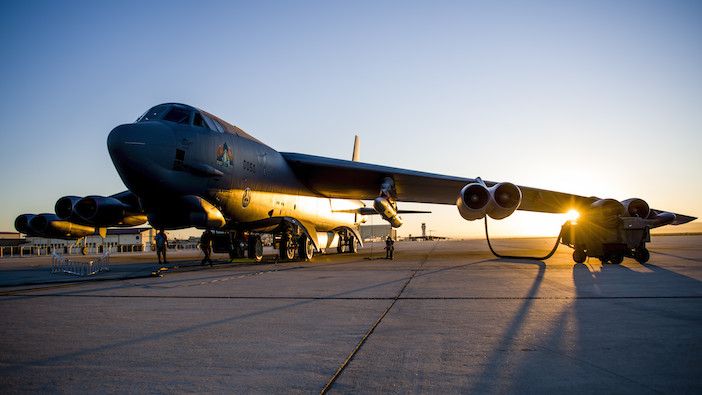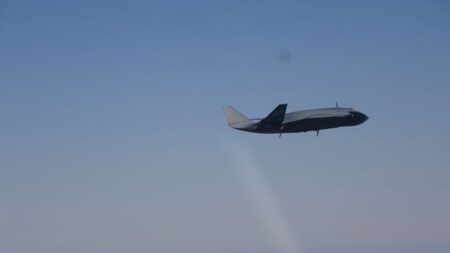The US Air Force has detonated the warhead on its Air-Launched Rapid Response Weapon (ARRW) hypersonic missile for the first time during a test.
The AGM-183 Air-Launched Rapid Response Weapon (ARRW) was successfully detonated by the 780th Test Squadron, which is based at US Air Force Base Eglin in Florida, the US Air Force said in a statement.
ARRW (pronounced “arrow”) is an air-to-ground prototype missile that is launched from the B-52 Stratofortress aircraft. The missile is based on the Defense Advanced Research Projects Agency’s Tactical Boost Glide system, work on which began in 2015.
ARRW is a hypersonic glide vehicle, meaning it is launched from a rocket and glides to its target at hypersonic speeds, as opposed to hypersonic cruise missiles, which are powered by air-breathing engines, also known as scramjets.
AARW will be capable of travelling at average speeds of between Mach 6.5 and Mach 8 at a range of approximately 1,000 miles (1,600km).
The prototype missile successfully completed a series of captive carry test flights using a B-52 aircraft between June 2019 and August 2020. However, ARRW’s first free-flight test failed in April 2021, at Point Mugu Sea Range, off the coast of Southern California.
The recent test was the first time engineers have tested the AARW hypersonic missile’s warhead to collect data on its lethality.
According to the test’s manager, David Spiker from the 780th Test Squadron, the nature and shape of the warhead required “a lot of firsts for everyone involved”, including a “new and unorthodox design and construction for the test arena, the test procedures and equipment, the warhead’s fragmentation data collecting and the post-test data processing to ensure the warhead’s effects have been accurately characterized”.
The 780th Test Squadron successfully designed and conducted the test to ensure the customer’s data requirements were met using new and improved test tools, technologies, and techniques.
Hypersonic weapons programs
- Conventional Prompt Strike, USA, Common Glide Vehicle with booster; Initial operating capability in 2028
- Long-Range Hypersonic Weapon, USA , will use Common Glide Vehicle with booster; Flight tests planned through 2023
- Tactical Boost Glide (TBG) , USA , Glide vehicle; testing planned through at least 2021
- Air-Launched Rapid Response Weapon (ARRW) , USA, will use TBG; Flight tests planned through 2022
- Operational Fires (OpFires), USA , ground-based missile Testing through 2021; transitions to weapon system integration planning and design in 2021
- Hypersonic Air-breathing Weapon Concept (HAWC), USA , air-breathing missile; Complete flight tests in 2020; final program reviews in 2021
- Avangard, Russia, glide vehicle deployed from a missile
- 3M22 Tsirkon (aka Zirkon), Russia; Ship-launched missile
- Kinzhal (Dagger), Russia; air-launched missile (unverified)
- DF-ZF (previously referred to as the WU-14) ,China; Glide vehicle deployed from missile
- Starry Sky 2, China; Glide vehicle waverider type
- Southern Cross Integrated Flight Research Experiment (SCIFiRE), Australia; Glide Vehicle
- BrahMos II, India; Cruise missile
- Hypersonic Technology Demonstrator Vehicle, India; Glide vehicle
- V-max (Experimental Maneuvering Vehicle), France Glide vehicle
- ATLLAS II , EU (Germany); Glide vehicles
- Hypersonic Cruise Missile – Japan
(Source: Hypersonic Weapons: Background and Issues for Congress)





